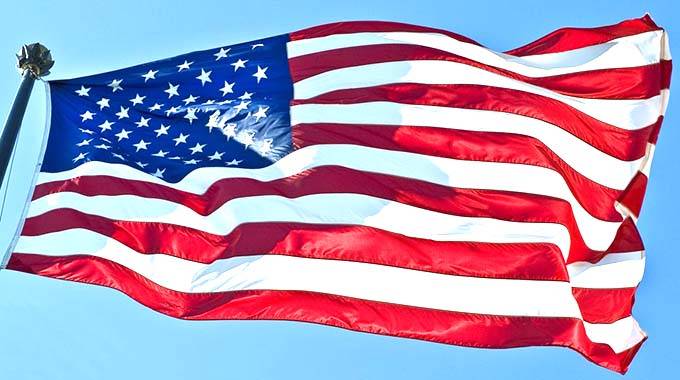Economic polarisation in US shows failure of capitalism

Phillipa Jaja
Correspondent
Capitalism is an economic system in which private actors own and control property in accord with their own interests, and demand and supply freely set prices in markets in a way that can serve best the interests of the society.
The essential feature of capitalism is to make profit.
Used by a country to manage its economic resources and regulate their means of production, it is often contrasted with socialism used by governments who sorely make all legal production and distribution decisions.
Government, rather than the free market, determines the amount of output (or supply) and the pricing levels of these goods and services.
Capitalism has several downsides which are labour exploitation, unequal wealth distribution in stability, less stability and so on.
These downsides are what characterises American economic inequalities today.
It is what has led to its economic polarisation where the margin between the moneyed and the poor keeps increasing leaving in its wake poverty which the government is unable to stop. Leaving parts of the population in intractable poverty to advance goals of capitalism violates human rights of those people which Governments ought to protect.
The US has failed.
Around the world, from South America to Africa where countries mimic the US system the effects such as class wars, crime and poor living conditions for the impecunious, have been evident.
The pitfalls of capitalism have also been recorded in the global financial system, leading to crashes such as those experienced in 1997 and 2008.
Essentially, the system has failed and countries around the globe such as Zimbabwe and the developing world, need to shun this system and grow more sustainable models suitable for local conditions.
The rise of China as an economic powerhouse – which is serving it at domestically and showing good example to other countries of the world – shows that unlike what Western thinkers and philosophers had planned, there are better economic models.
To add to this, the phenomenon of “Asian Tigers” proves that the US capitalist model is not the exclusive successful model as Asian Tigers have experienced rapid industrialisation with sharp focus on exports, an educated populace, and high savings rates; and now form part of the global 35 most advanced nations.
This gives a solid indication that US capitalism, with its failures at home and abroad, should neither be forced on, nor emulated by, countries of the world.
Economic polarisation in America
The largest economy, America, is the most polarised among Western countries.
An in-depth report by Xinhua that recently investigated this phenomenon revealed that despite adopting massive fiscal and financial stimulus measures since the onset of Covid-19, America has been unable to stem economic inequality between its people since the 1970s.
A huge pay gap, the economic divide, a shrinking middle class, a rigid social stratification, the unaddressed poverty issue and the Covid-19 pandemic have driven economic inequalities in America.
The Gini coefficient which measures economic inequality shows rising statistics economic inequalities in the country.
According to the World Bank, the US Gini coefficient has gone up from 0,353 in 1974 to 0,415 in 2019, exceeding the alarming level at 0,4 indicating a large income gap. This is against the manageable Gini coefficient of other countries that were largely kept below 0,35, or even 0,3 in some cases
The wealthy population of America has largely enjoyed much faster income growth than the low income group.
The US Census Bureau says between 1970 and 2020, the average income of the top fifth families increased by 182 percent to 253 000 US dollars while the middle-income households and the bottom fifth saw their average incomes households grow by just 133 percent to 72 000 dollars and 113 percent to 15 000 dollars respectively.
In 1975, the average income of the top fifth was 10,3 times that of the bottom fifth. The gap widened to 17,4 times by 2020. The same Census Bureau also established that share of national income held by upper income households has risen markedly.
Income shares of the top fifth and top 5 percent that were at 43,3 percent and 16,6 percent respectively in 1970, rose to 52,2 percent and 23 percent in 2020.
A huge pay gap drove these statistics as according to Equilar, the median income of CEOs of listed companies in 2021 was 20 million dollars up 31 percent from 2020, while there was a 4 percent rise for average employees from around 69 000 dollars to 72 000 dollars.
Those of the middle income and low income households declined as middle income group shares dropped from 52,7 percent in 1970 to 44,7 percent in 2020. Those of the low income group in the bottom fifth fell from 4,1 percent to 3 percent.
Since 1993, the income shares of middle families who make up 60 percent of total households has remained lower than that of the top fifth and is becoming increasingly disproportionate.
Additionally, middle class has shrunk in America.
The share of American adults who live in middle income households fell from 61 percent in 1971 to 51 percent in 2019. The share in the upper income tier rose from 14 to 20 percent over the same period.
Meanwhile, the share in the lower income tier increased from 25 to 29 percent. Unequal distribution of wealth coupled with the ineffectively addressed poverty issue has also driven income inequality. Poverty has lingered at 12.5 percent from a drop of 10 percent 1959 to 1969.
According to the US Census Bureau, 46,2 million American people were living in poverty in 2010, and the poverty rate reached up to 15.1 percent, the highest in 52 years. In 2020, the poverty rate climbed by 0,9 percentage points to 11,4 percent from 10,5 percent in 2019.
Currently 37 million American people are still living below the poverty datum line.
Similarly, the Covid-19 pandemic led to massive job losses while excessive money supply and large-scale fiscal spending drove up stock and housing prices enriching wealthier asset owners.
Factors driving economic polarisation
At the heart of this economic polarisation is a capitalistic stance adopted by government resulting in monopoly, electoral politics, government policies, weakened labour unions, and racial discrimination.
Wealth accumulation and poverty are inextricably linked to capitalism and since the 1970s were a period of liberalisation with a shift towards promotion of privatisation, economic inequality is very pronounced in the US.
Inevitable grievances have resulted from this with the 2011 Occupy Wall Street movement reflecting the American people’s grievances about unfair capital accumulation and wealth disparity.
Government harshly reacted to this with harsh recriminations on its people however their source of grievances was never heeded with economic disparity after 12 years having gotten worse.
Social unrest has however continued resulting in frequent demonstrations in recent years.
The Black Lives Matter protests was on a large scale with as much police violence and underprivileged Americans sought to combat racial discrimination along with economic inequality. Partisan conflict and government alternation have led to flip flops in US policies.
Rivalry between the Republicans and the Democrats on taxation has resulted in failure to effectively tax the rich, an anomaly that could have narrowed the wealth gap.
As a result, the rich have successfully been able to “legally” avoid taxes such that the true tax rate of the richest Americans is only 3.4 percent far lower than that of ordinary wage earners according to a report by ProPublica, a news outlet.
Moreover, the weakening of trade unions, likely to be made up of black workers has increased poverty in America.
Racial discrimination entrenched in the workplaces coupled with low earnings in the workplaces by people of race continues to widen the economic gap.
For example, a Fed survey in 2019 showed that the median white household has a net worth ten times that of black households. Moreover, the unemployment rate of black workers has long been twice that of whites.
Black professionals are poorly represented in high paying corporate jobs. In 2020, there were only four black CEOs among Fortune 500 companies.
The ripple effects of these wealth inequalities have been significantly felt. For starters, there is the issue of worsening human rights as life expectancy has declined.
Secondly, access to higher education is skewered towards the rich while the low-income group has no equal access to education. As a result, public dissatisfaction with higher education is increasing.
Thirdly, the homeless are living in a dire situation caused by the wealth disparity.
A report by the US Department of Housing and Urban Development showed that more than 580 000 people were homeless in 2020, with 226 000 sleeping outside, in cars or abandoned buildings. The Covid-19 pandemic also hit the poor hardest.
Data collected from more than 3 200 counties in the US compared against 10 percent of the regions with the richest 10 percent showed that the poorer counties reported coronavirus death rates nearly double those in the wealthier ones.
More than 200 000 children, already living at the bottom of the social ladder were orphaned by the pandemic.
Sadly, government has not provided help to these Covid-19 orphans.









Comments